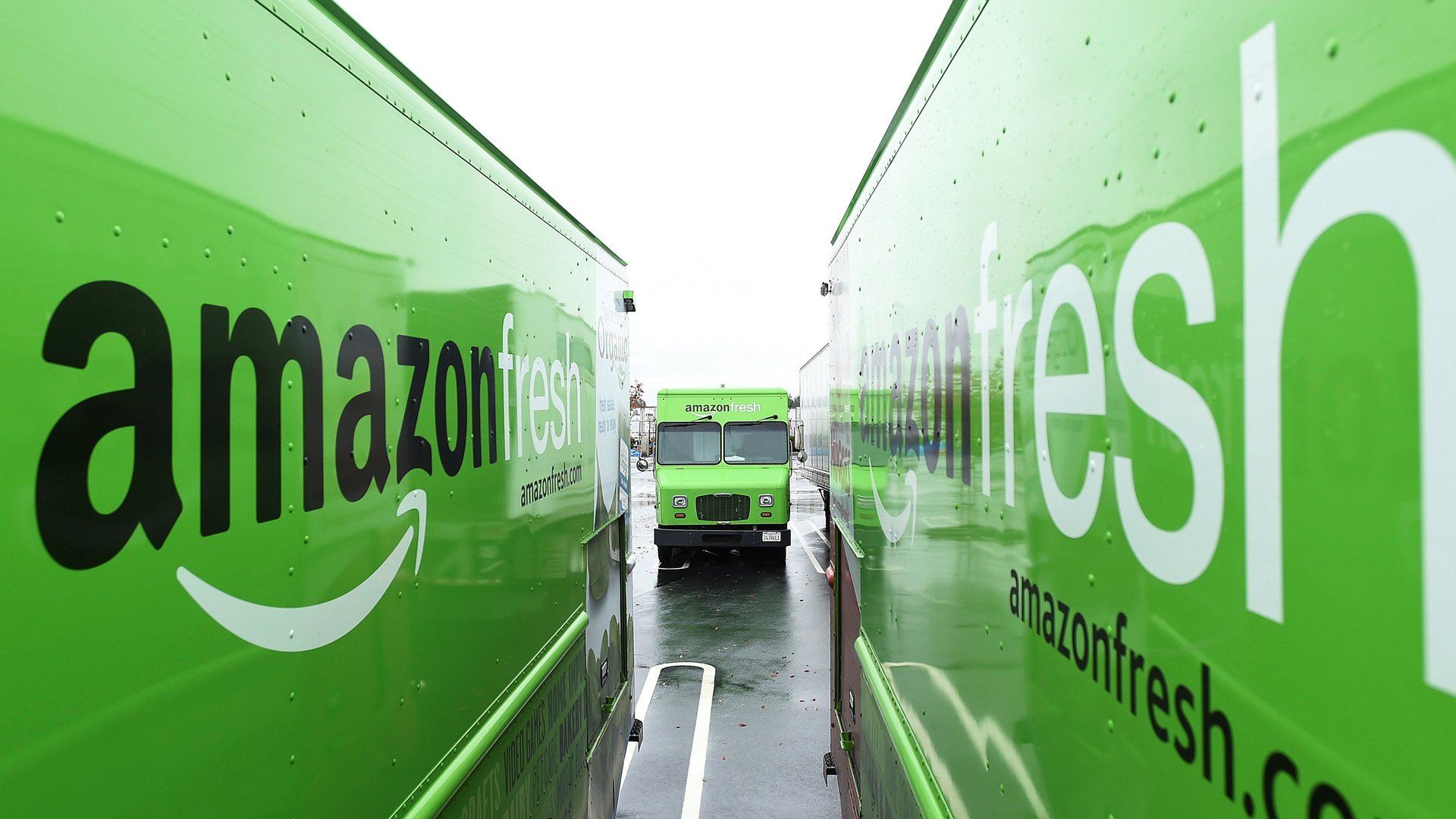Amazon is entering groceries just as a vicious supermarket war is breaking out
In southwest Ohio, the prices of staple foods are hitting the floor. A carton of eggs in Cincinnati supermarkets are going for as little as 39 cents. And gallon-sized jugs of milk are selling for less than a dollar.


In southwest Ohio, the prices of staple foods are hitting the floor. A carton of eggs in Cincinnati supermarkets are going for as little as 39 cents. And gallon-sized jugs of milk are selling for less than a dollar.
The American grocery store is about to become a battleground—and consumers will love it.
Shoppers in the UK certainly did. Established companies such as Tesco forfeited millions in sales to compete on price with German discount grocers Aldi and Lidl, who began opening more and more stores. Now, those discount brands have made it to the US, and have opened hundreds of stores across the country.
Executives at Kroger compared the oncoming battle to a game of American football. But if the fight resembles anything Tesco has waged in the UK, the result in the US could be brutal for established brands, including Meijer, Safeway, Albertsons, and Kroger.
These telltale signs of a brewing US grocery-store war are happening just as online retailer Amazon has decided it wants to shoehorn itself into the grocery business by acquiring health food grocery chain Whole Foods for $13.7 billion.
If Amazon pours billions of dollars into an effort to fundamentally change how Americans get their food—by shifting them more to a style of online shopping that relies on food-delivery services—the next couple years may wind up being pivotal in shaping the future of how people shop for every good found in the average home. And if Amazon CEO Jeff Bezos can simultaneous drive Whole Foods’ famously high prices down to a competitive level, it could pave the road to a shift in shopping habits.
But disrupting groceries will be a lot different than shaking up publishing, which is how Amazon got its start. Unlike bookstores of the late 1990s, clawing away at market share by driving prices down is a game supermarket companies are already good at playing.
For now, low egg and milk prices are mostly confined to stores in the Midwest. But cheap foods are likely to spread quickly across the US—and that was already happening before Amazon stuck its nose in.